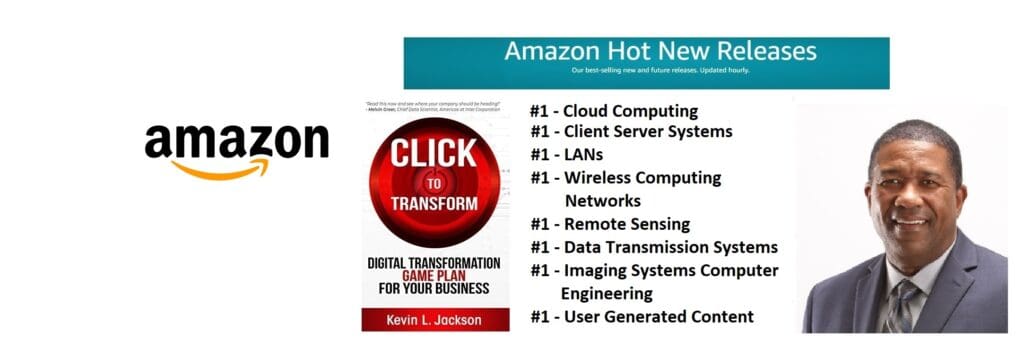Twitter Feed
Interoperability: A Much Needed Cloud Computing Focus
Cloud computing transitions information technology (IT) from being “systems of physically integrated hardware and software” to “systems of virtually integrated services”. This transition makes interoperability the difference between the success…
Managing IaaS and DBaaS Clouds with Oracle Released
Over the holidays I actually spent some time reviewing the newly released “Managing IaaS and DBaaS Clouds with Oracle Enterprise Manager Cloud Control 12c“. This book is a step-by-step tutorial…
Veterans 360: Helping Young Combat Veterans Succeed
Refusing to accept the 30 percent unemployment rate for California veterans between the ages of 18 and 24, Veterans 360 (V360) offers recently-separated combat veterans the opportunity for a solid…
Veterans 360 Paves the Way with Cloud Certification Training
In keeping with their mission to support young combat veterans’ transition into civilian life, Veterans 360 plans to launch a free Cloud Technology Certification training program. Vets360-Cloud will give veterans…
DBT-Data is a Force to be Reckoned With
DBT-Data further established itself in the data storage industry as a formidable force with the $35 million dollar purchase of the state of the art Cyber Integration Center on 1175…
2014 Federal Intelligence Summit – Washington, DC
DBT Data and Potomac Officers Club are excited to announce that Al Tarasiuk, CIO of the Office of the Director of National Intelligence (ODNI), will be part of an ICITE…
3rd Annual World Congress of Cloud Computing 2014
Today I am proud and honored to announce that I will be participating in this year’s 3rd Annual World Congress of Cloud Computing 2014! Highlighting the theme of “Chinese Dream…
NRRC Video Series – Video 8 : Raytheon R3 Decision Support Tool and Advanced Tactical System
In September, the NCOIC delivered the Geospatial Community Cloud (GCC) demonstration. Sponsored by the National Geospatial-Intelligence Agency, this demonstration showed how an interoperable, hybrid-cloud operating environment can be quickly enabled…
NRRC Video Series – Video 7 : Dave Boulos Demonstrates Bring-Your-Own-Device (BYOD) Management
In September, the NCOIC delivered the Geospatial Community Cloud (GCC) demonstration. Sponsored by the National Geospatial-Intelligence Agency, this demonstration showed how an interoperable, hybrid-cloud operating environment can be quickly enabled…
Just Pinched Myself ! Part of a “GovCloud Dream Team” !!
DBT-DATA provides reliable, flexible, and cost-effective data center solutions to federal, enterprise, and internet customers. With premier facilities in Ashburn, Virginia and the Cyber Integration Center in Harrisonburg, Virginia, they…
Hybrid IT enables a composable infrastructure which describes a framework whose physical compute, storage, and network fabric resources are treated as services.
Resources are logically pooled so that administrators need to physically configure hardware to support a specific software application, which describes the function of a composable architecture.
This type of transformative infrastructure is foundational to contemporary agile business because a hybrid IT environment, private clouds, public clouds, community clouds, traditional data centers, and services from service providers must be integrated and interconnected.
Composable infrastructures can build new revenue-generating products and services faster while simultaneously addressing the key inhibitors to change, which include the following:
- General concerns regarding lack of adequate hybrid infrastructure security
- The false impression that cloud cannot support the operational/performance requirements of critical applications (e.g., SAP and Oracle)
- Management challenge presented by multi-cloud environments contracts that will include varying levels of governance and service-level agreements (SLAs)
- The need to match employee management skills across various cloud platforms
Composable infrastructure architectures have two major functions. They must be able to disaggregate
and aggregate resources into pools and compose consumable resources through a unified API.
Fifth-generation (5G) wireless networks will significantly enhance the current mobile network environment. These new networks will use multi-access edge computing (MEC) to extend composable enterprise infrastructures to the network edge, a capability broadly referred to as edge computing.
To support this future IT-operating environment, enterprise content and application developers need to collaborate with telecommunications network operators to gain access to edge services.
Using this architecture, “Internet of Things†(IoT) applications can respond in real time to local events and use cloud capabilities for all other data processing functions.
Edge computing application design development model has three locations:
- Client
- Near server
- Far server
An end-to-end IT service designed to operate in an IoT environment follows this model also but with different reference names or components:
- Terminal device component
- Edge component(s)
- Remote component(s)
The IoT architecture emphasizes the distribution of components. In this environment, network services (i.e., routers, firewalls, load balancers, XML processing, and WAN optimization devices) are replaced with software running on virtual machines.
To ensure secure operations, key cybersecurity tasks include the following:
- Securing the controller as the centralized decision point for access to the Software Defined Network (SDN)
- Protecting the controller against malware or attack
- Establish trust by protecting the communications throughout the network by ensuring the SDN controller, related applications, and managed devices are all trusted entities
- Creation of a robust policy framework that establishes a system of checks and balances across all SDN controllers
- Conducting forensics and remediation when an incident happens in order to determine the cause and prevent reoccurrence
Network Function Virtualization (NFV) establishes a virtualized networking environment dedicated to providing different network services. If NFV is used, the SDN can also act as a hypervisor for NFV virtual machines.
Approaches for implementing cybersecurity protections include the following:
- Embed security within the virtualized network devices
- Embed security into the SDN servers, storage, and other computing devices
The Zero Trust security model is centered on the belief that organizations should not trust anything inside or outside their perimeters. This model requires verification of anything and everything trying to connect to its systems before access is granted. The Zero Trust approach uses existing technologies and governance processes in securing the enterprise IT environment.
When designing and deploying transformational solutions across enterprise, cloud, 5G networks, MEC environment, and the Zero Trust paradigm must be extended to include all associated SDNs.
Read more about digital transformation and transformation infrastructure: grab a copy of my new book, Click to Transform, out today!

Cloud Computing
- CPUcoin Expands CPU/GPU Power Sharing with Cudo Ventures Enterprise Network Partnership
- CPUcoin Expands CPU/GPU Power Sharing with Cudo Ventures Enterprise Network Partnership
- Route1 Announces Q2 2019 Financial Results
- CPUcoin Expands CPU/GPU Power Sharing with Cudo Ventures Enterprise Network Partnership
- ChannelAdvisor to Present at the D.A. Davidson 18th Annual Technology Conference
Cybersecurity
- Route1 Announces Q2 2019 Financial Results
- FIRST US BANCSHARES, INC. DECLARES CASH DIVIDEND
- Business Continuity Management Planning Solution Market is Expected to Grow ~ US$ 1.6 Bn by the end of 2029 - PMR
- Atos delivers Quantum-Learning-as-a-Service to Xofia to enable artificial intelligence solutions
- New Ares IoT Botnet discovered on Android OS based Set-Top Boxes
